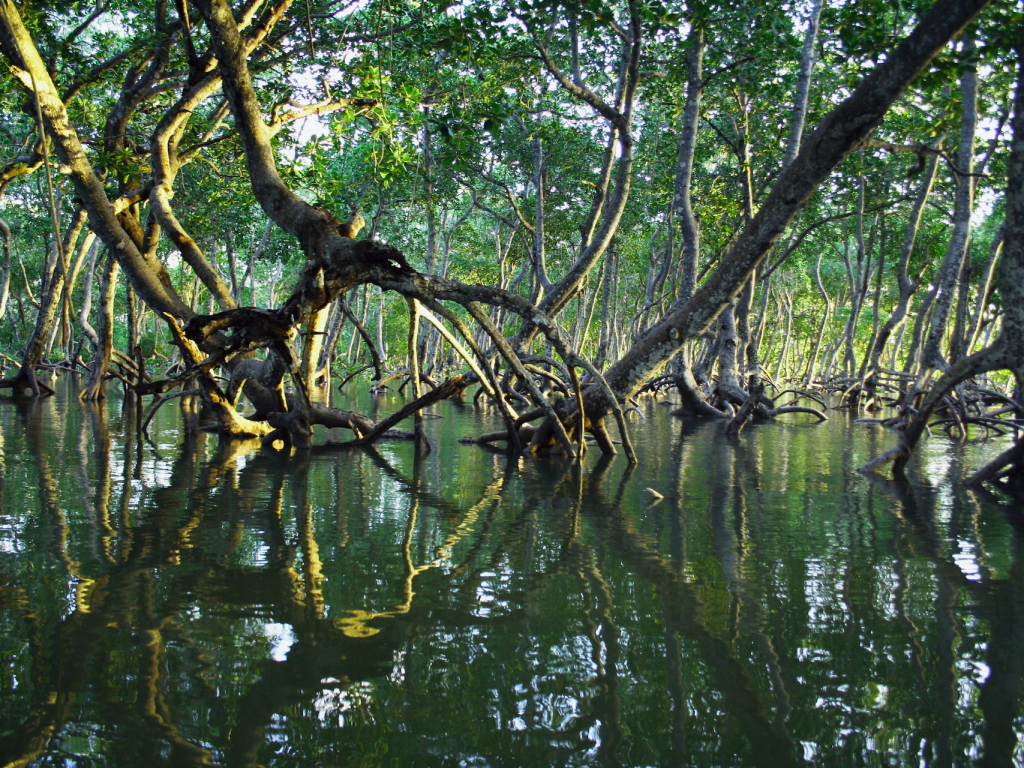Flood recovery and mangrove reforestation in Mozambique
Communities surrounding the Limpopo River Estuary in Mozambique maintain a mangrove nursery, plant seedlings, and monitor the state of reforested areas . They are supported by the Centre for Sustainable Development of the Coastal Zones, an autonomous institution under the Ministry of Land, Environment and Rural Development. The reforested areas have been found to provide […] September 28, 2022
Communities surrounding the Limpopo River Estuary in Mozambique maintain a mangrove nursery, plant seedlings, and monitor the state of reforested areas . They are supported by the Centre for Sustainable Development of the Coastal Zones, an autonomous institution under the Ministry of Land, Environment and Rural Development. The reforested areas have been found to provide improved flood protection, reduce salt intrusion on agricultural land, and have brought back previously diminished wildlife species.
Following weakening due to human and environmental pressures, flooding of the estuary in 2000 left mangrove forests uprooted and vulnerable to dieback. Starting in 2008, 58 community members began restoring the channels that had previously connected the mangroves with the tides. Two years later, a mangrove nursery was created, which has to date produced over 160,000 seedlings that 200 community members began replanting. Seedlings have survived at a rate of ~75% after community monitors responded to the threat of grazing crabs by covering seedlings with reeds. By 2013, 100 hectares of mangroves had been reforested. A further severe flooding occurred in 2013, but resulted in significantly less damage due to the restoration efforts.
With such visible benefits of the restored mangrove for agriculture, wildlife, and flood protection, community members ultimately imposed a ban on forest product extraction in the reforestation zone. Communities have since shifted from timber harvesting and cattle grazing to more sustainable livelihood practices such as crabbing, tilapia farming, and mangrove honey production which have been reported as more stable and profitable due to the shelter by restored mangroves. The strengthened mangroves have reportedly reduced salt water intrusion on agricultural land increasing productivity and likely bolstering food security.
Ten permanent positions managing the mangrove nursery and monitoring reforestation progress have been created, and each community member participating in mangrove replanting was also provided with a small remuneration. Seeing as women are primarily responsible for subsistence farming in the area, they have also since become much more active in the conservation and reforestation efforts.
Read more about the mangrove reforestation in Mozambique in our full case study on the global online platform.
